What Happened During the Jonestown Massacre? The True Story of the Deadly Mass Murder in 1978
In 1978, cult leader Jim Jones led one of the biggest mass murders in American history
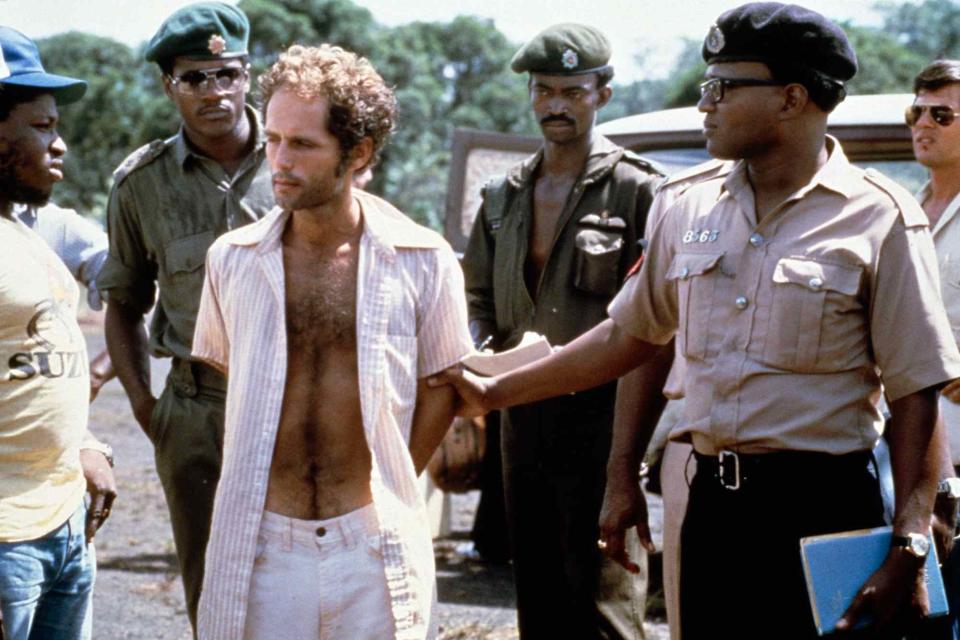
David Hume Kennerly/Getty
People's Temple follower Larry Layton following his arrest on November 18, 1978.The Jonestown Massacre is one of the largest mass death events in American history.
On Nov. 18, 1978, over 900 Americans were killed after ingesting poison at Jonestown, a religious commune in Guyana, South America led by Jim Jones. The reverend brought thousands of members to his religious cult with his charismatic personality and focus on civil rights. His group, the Peoples Temple, was initially involved in charitable causes and allowed membership of all races, which was radical during the 1950s to 1970s.
The seemingly wholesome community dynamic became deadly after Jones moved the church to Guyana and grew increasingly paranoid. At first, many of the members seemed to be happy to be in the new environment.
A family member of a Jonestown victim recalled a letter sent to her by her niece to The Washington Post. "I’m doing well,” it read. “We’re growing all sorts of fruits and vegetables. I’m going to stay. I’m free and happy now and the girls are also with me and you know how important that is to me.”
Related: The Best True Crime Documentaries to Stream Now
Things quickly started to fall apart, though, as Jones' paranoia increased, his abuses were called out and members started trying to flee. The large-scale murder-suicide that followed has been the subject of study into cult behavior and has been at the center of many documentaries including Hulu's 2024 Cult Massacre: One Day In Jonestown.
From the cult beginnings to the aftermath of the mass murder, here is the true story behind the tragic Jonestown massacre.
Who was Jim Jones?
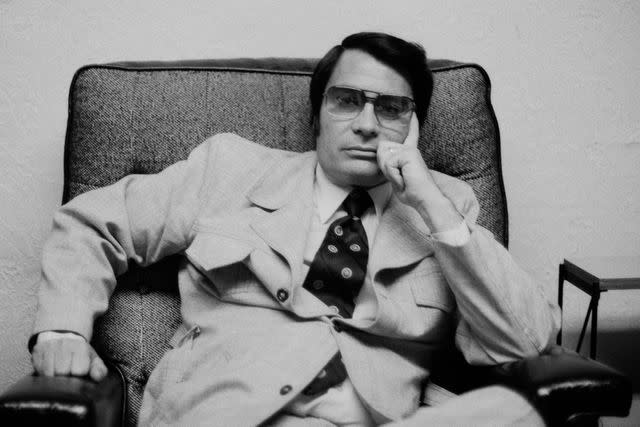
Janet Fries/Getty
Jim Jones in his office in San Francisco, California on July 3, 1976.Jim Jones was born on May 13, 1931, in Indiana. He became interested in religion as a child, being a regular churchgoer at a young age. After attending college, he started working in ministry and eventually became a reverend in Indiana.
His church was called the Peoples Temple — it promoted racial justice and allowed people of all ethnicities to join, with an emphasis on equal opportunity for Black Americans.
While growing his followers, Jones also grew his family. He had at least eight children with his wife, Marceline, and a member of the church, Carolyn Layton: Stephan Gandhi Jones, Jim Jon Prokes, Lew Eric Jones, Agnes Pauline Jones, Stephanie Jones, Suzanne O. Jones, Timothy Glen Tupper and Jim Jones Jr.
Some of his sons survived the massacre and have spoken about their father since. Stephan told ABC News in 2018, “I lived in a community that was filled with every walk of life, every color in the rainbow, every level of education. For the most part, we lived in harmony most of the time, especially early on."
Things took a dark turn when Jones began to call himself a prophet and claimed he was psychic, able to heal people with his mind. Before the events of the Jonestown Massacre and the church's move to Guyana, the preacher was also accused of sexual assault, rape and staging fake healing sessions.
What was the Peoples Temple?
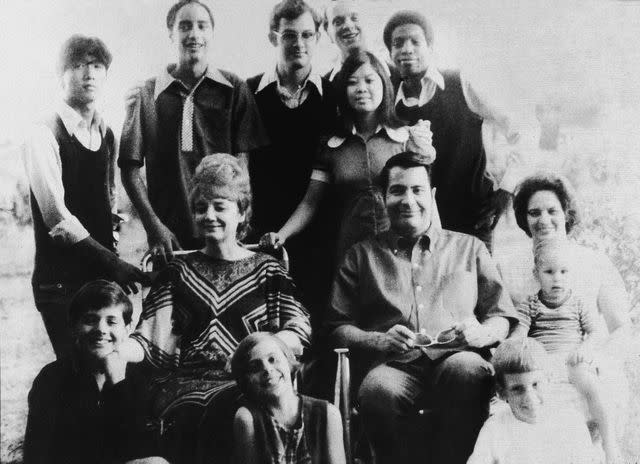
Don Hogan Charles/New York Times Co./Getty
Jim Jones and Marceline Jones with their adopted children and next to his sister-in-law with her three children in 1976.The Peoples Temple was Jones' congregation, which began informally in the 1950s. The original goal of his ministry was to combat racism and poverty, attracting an integrated crowd in Indiana. Years later, in 1964, Jones was ordained.
Despite the church's early civil rights focus, the preacher took a turn and started to warn his congregants of the nuclear holocaust, a war that he believed would cause the world to end. Jones moved his church to Ukiah, Calif., where he said they would be safe from his prediction.
Eventually, the church opened branches in San Francisco and Los Angeles before making the move to Guyana. Stephan told ABC News that although the church's origins were strong, things very quickly fell apart as his father grasped for more power.
“There was nothing spiritual about my father. Of course, in my view of things, he had every bit the loved and juicy soul in him that everyone else does, but he had lost complete sight of that. His entire existence was superficial,” he said.
Where was Jonestown?
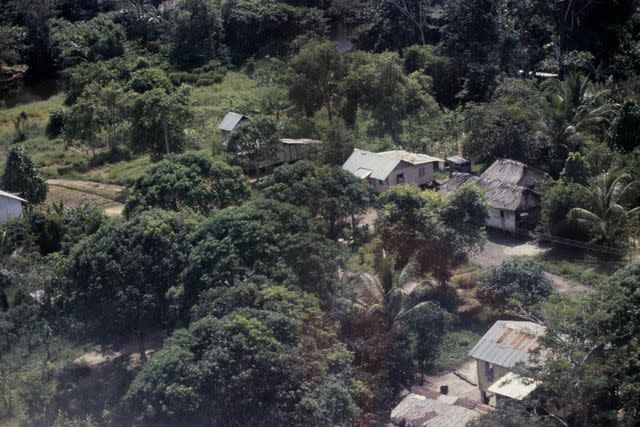
UPI/Bettmann Archive/Getty
Aerial view of buildings at the People's Temple compound in Jonestown, Guyana.Jonestown was the agricultural settlement that the Peoples Temple and Jones created in 1974, a decade after he was ordained. The cult leader was motivated to move the congregation after a bout of abuse accusations and bad press.
The property was more than 3,800 acres in the jungle of Guyana, a former British colony located in South America, per PBS. The stated goal of the settlement was to foster a Socialist, people-ran culture of growing their own food and working together. The reality, as survivors later shared, was an intense, prison-like environment of forced labor and constant threats of violence.
Originally, some members of the Peoples Temple transformed the jungle land into a space that was habitable for the rest of the congregation. Jones and the rest of the church later moved to the settlement in 1977.
What led to the Jonestown Massacre?
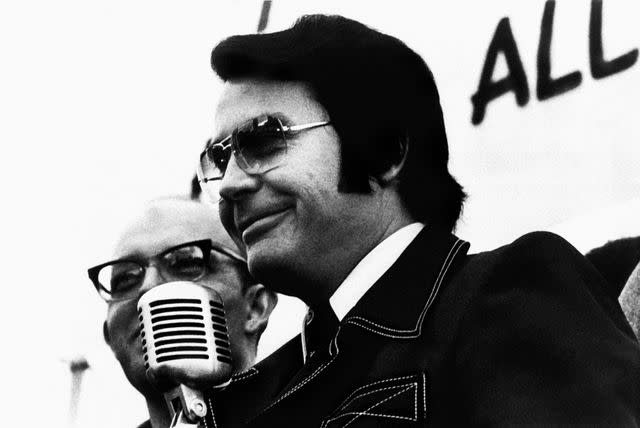
Michele VIGNES/Gamma-Rapho/Getty
Jim Jones.Life in Jonestown allegedly started peacefully until Jones began taking medications from the residents of the island, using them himself and hiding members' passports, among other reported abuses.
Philip Blakey, who was one of the original Peoples Temple members to help build Jonestown, wrote to his ex-wife and ex-member of the church Deborah Layton, “I never thought it would come to this… I really loved Jonestown because I built it and saw it all from when there was still bush there. It was not until Jones got there that things got bad. If he really wanted to do something for Socialism he could not have done anything worse."
Jones was reportedly in total control of the members of his church. He allegedly barred any outside news or information, making his version of life outside of the settlement the truth. To keep his followers in Jonestown, he fabricated news events, separated and turned families against one another and allegedly sexually assaulted members of his church.
Constantly under the influence, Jones started acting more erratically. He began holding "white nights," in which he allegedly forced the residents of Jonestown to listen to all-night rants about the ways in which he believed the government and media conspired against him.
At least two of these long evenings featured a "loyalty test," which consisted of Jones allegedly handing out what he called poison and instructing everyone, including children, to ingest it. Before the day of the mass murder, which Jones called "revolutionary suicide," the ritual was a trick.
"When the time came when we should have dropped dead, Rev. Jones explained that the poison was not real and that we had just been through a loyalty test," Deborah wrote in a 1978 affidavit. "He warned us that the time was not far off when it would become necessary for us to die by our own hands."
Some defectors of the Peoples Temple began speaking to the press about their experiences at Jonestown. Deborah was one of them, later telling ABC News, "I wrote an affidavit begging the United States government to get involved, that 1,000 people were being held against their will in Jonestown, and that Jones was a monster and had lost his mind."
Those inside Jonestown were unable to flee, though a small number of settlers were able to get out. A family who left contacted California Rep. Leo Ryan, who was looking into the allegations made against Jones. Ryan, his staff, members of the press and concerned family members eventually traveled to Jonestown in 1978, and things got deadly.
What was the Jonestown Massacre?
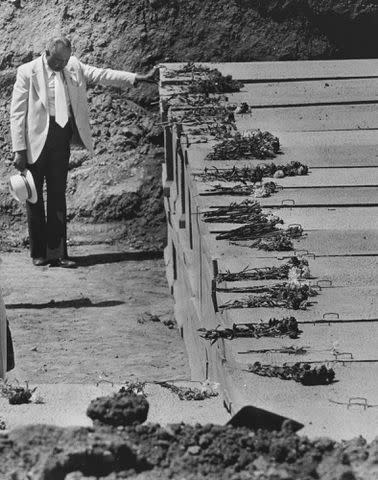
Roy H. Williams/MediaNews Group/Oakland Tribune/Getty
A mourner reflects in a moment of prayer before the burial of Jonestown victims at Evergreen Cemetery in Oakland, California on May 24, 1979.Ryan's arrival in Jonestown stoked Jones' paranoia that the government was trying to take him down. When the congressman arrived in Guyana on Nov. 18, 1978, and attempted to evacuate some church members, Jones' security team shot and killed him, along with four others before they could even get off the airstrip.
One of the congressman's staffers, Jackie Speier, was shot five times but survived. Before leaving on the fact-finding mission, Speier said she felt something was going to go wrong, so much so that she left a note for her parents to find if she were to be killed.
In 2024, upon the release of Cult Massacre: One Day In Jonestown, Speier told PEOPLE about the fateful two days when she and Congressman Ryan's team explored Jonestown. “He was sitting at a table,” she said of Jones. “He kept saying things like, ‘We just want to be able to live here on our own. Everything is wonderful. All you're hearing are lies,’ and he wore those sunglasses."
She continued describing the reverend's composure that day, "He looked like he was sick, or he was sweating profusely. He seemed a little manic, and he was not the powerful charismatic leader that attracted 900 people into the jungles of Guyana.”
Some members of the team started talking to residents and realized they needed to start evacuating people. Soon after, Jones' paranoia skyrocketed and he sent a gunman to kill Speier, Ryan, the rest of their team and any defectors.
Back at the compound, Jones instructed his followers to kill themselves by ingesting Valium, chloral hydrate, cyanide and Phenergan that was mixed into Flavor Aid, per Vox. The method of consumption later inspired the colloquialism "drinking the Kool-aid" to mean accepting a dangerous or made-up set of beliefs.
Within 48 hours of Ryan's arrival, nearly everyone at the Jonestown settlement was dead, including Jones himself. The horrible event was recorded on audio and was later discovered by the FBI.
Only about 90 members were able to escape.
Where are the Jonestown Massacre survivors now?
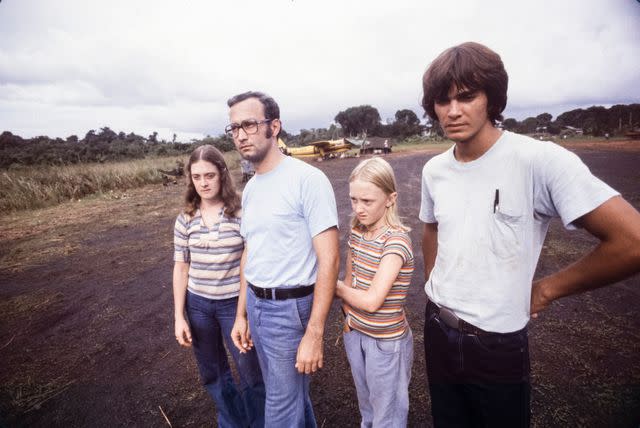
Matthew NAYTHONS/Gamma-Rapho/Getty
Brenda and Tracy Parks surrounding their father alongside Chris O'Neal.Two of Jones' children, Jim Jones Jr. and Stephan Jones, were among the survivors. They were attending a basketball game in Guyana's capital city, Georgetown, when the massacre happened.
"When people say basketball saved their life, I can literally say basketball did save my life," Jones Jr. told ABC News. "If I wasn't playing basketball, I would have died."
Another survivor, Eugene Smith, who lost his wife and child, told his story to Newsweek. "I never remarried or had children. I'm not ashamed to say it, but I failed at my most basic responsibility, which was to protect Ollie and Martin," he said. "For me, it was the most tragic mistake of my life and I couldn't afford to make that mistake again."
A memorial was placed in Evergreen Cemetery in Oakland, Calif., to pay tribute to the nearly 1,000 people killed. CBS News interviewed survivors who attended a 2023 memorial event, some of whom had strong reactions to Jones’ name being engraved alongside the victims. Although some families of those killed had decided to forgive Jones, many were upset that his name was included.
"You've got to be in denial and delusional to insult us and want us to honor Jim Jones," said Jynona Norwood, a survivor who lost 27 family members in the massacre. Others thought that including his name told the full story.
"Whoever died that day, their names are in alphabetical order on those plaques as a point of history. You can't change history as much as you want. We can erase all the evil people's names out of the book if you want to, it doesn't change history," survivor John Cobb told the outlet.
If you or someone you know is considering suicide, please contact the National Suicide Prevention Lifeline at 1-800-273-TALK (8255), text "STRENGTH" to the Crisis Text Line at 741-741 or go to suicidepreventionlifeline.org.
For more People news, make sure to sign up for our newsletter!
Read the original article on People.

